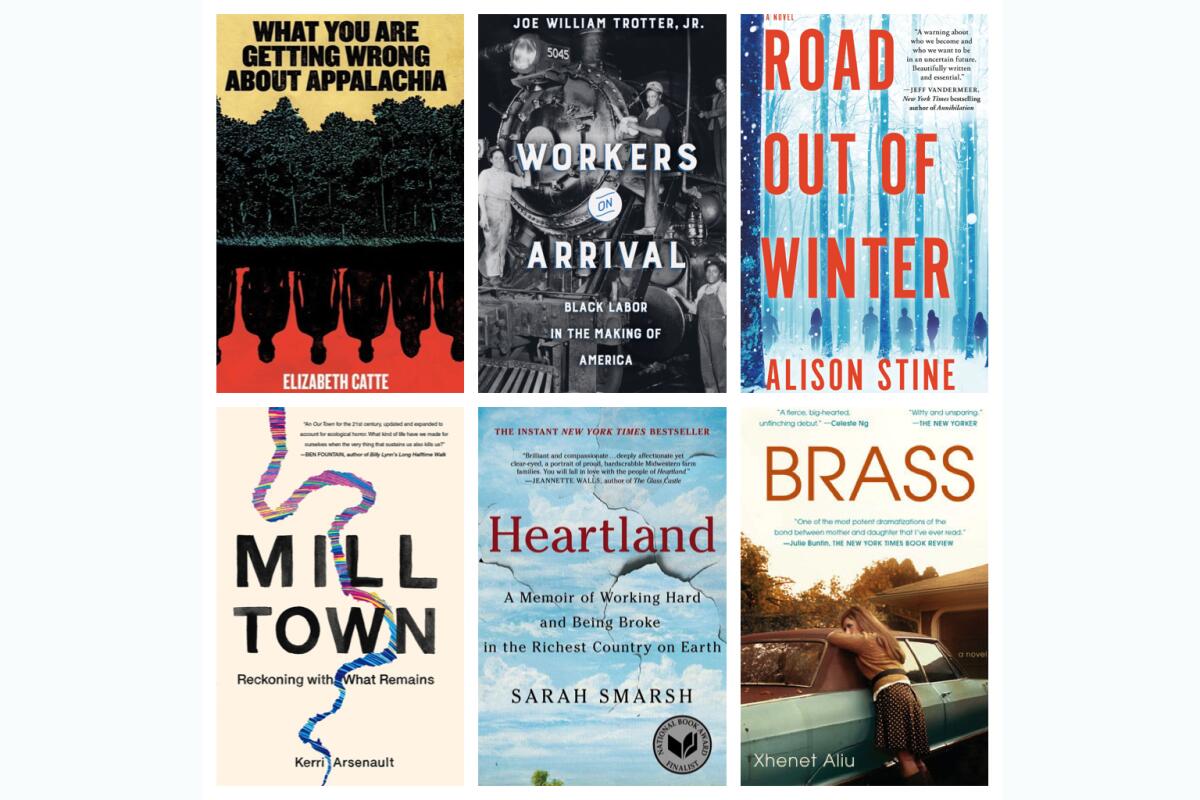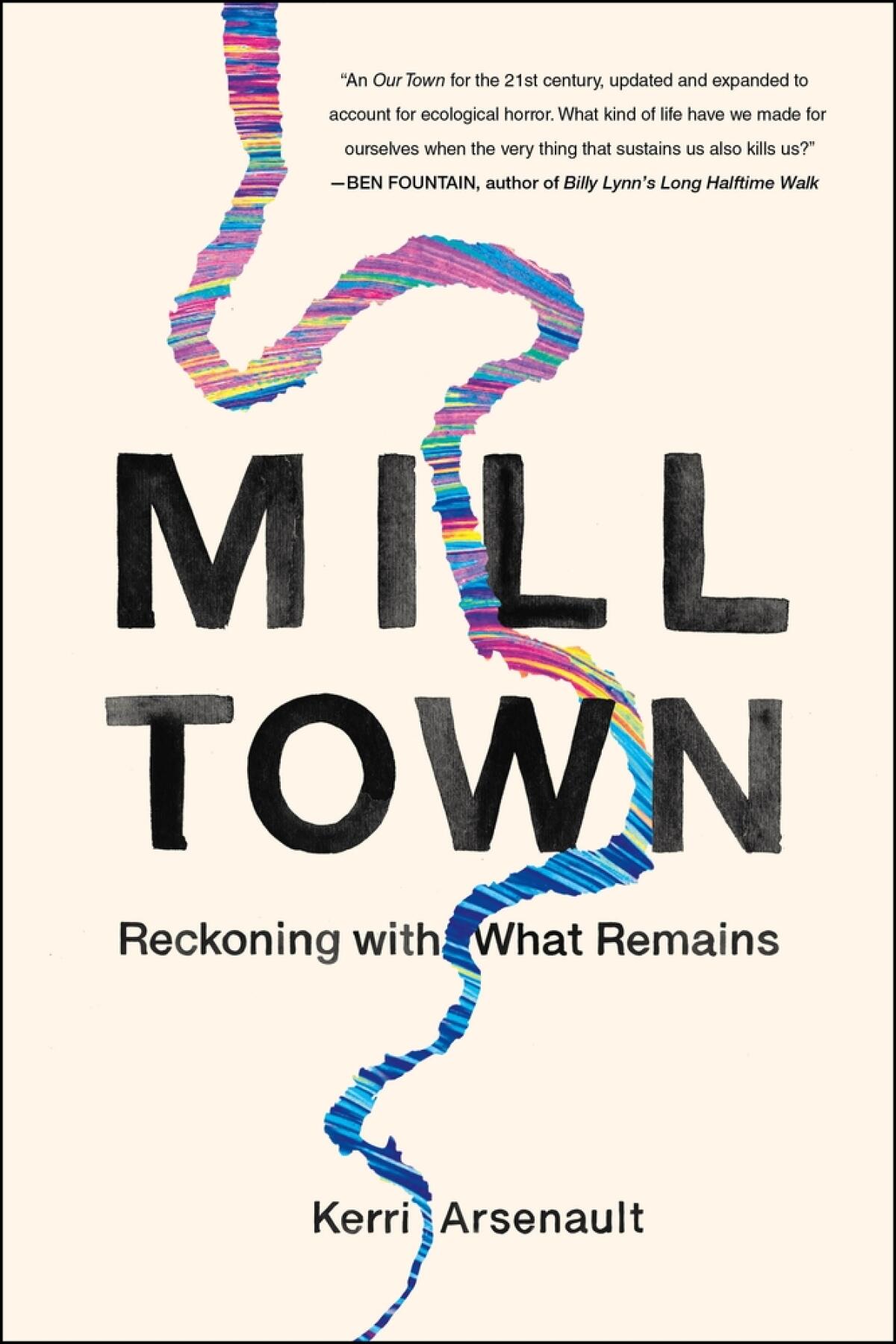8 books you should read instead of ‘Hillbilly Elegy’

On the Shelf
Eight alternatives to "Hillbilly Elegy"
If you buy books linked on our site, The Times may earn a commission from Bookshop.org, whose fees support independent bookstores.
In the 1880s, a new form of urban entertainment — “slumming” — became all the rage in London and New York. The wealthy would ride through poverty-stricken neighborhoods in hopes of being titillated by watching poor people. Netflix and director Ron Howard will offer a similar opportunity as “Hillbilly Elegy” begins streaming Nov. 24. The production, which stars Amy Adams and Glenn Close, is based on the memoir of the same name by J.D. Vance.
The book came out in 2016, the same year reporters, eager to explain the momentum behind Donald Trump’s campaign, latched onto a narrative in which the “working class” had channeled its “economic anxiety” into support for a failed businessman. Vance’s book gave them plenty of grist for their mill, depicting the poor of Appalachia as drug-addicted rageaholics living from one bad decision to the next.
While initial reviews were laudatory, more substantive critiques emerged. Among these was an essay by Elizabeth Catte, a writer and historian from East Tennessee, pointing to how Vance’s construction of a “mythical whiteness” tied directly into a right-wing ideology that the only thing preventing the poor from getting ahead were their own innate moral failings.
Earlier this month, Vance provoked criticism for tweets in which he bemoaned American fertility rates and proclaimed himself a nationalist. While he later claimed it was a joke, Vance failed to explain his remarks.
Ron Howard, evidently more liberal, has failed to comment on Vance’s remarks. He insisted he had no interest in the book’s troubling politics. Instead, the trailer hints at a film in which viewers will be able to gawk at the emotional dysfunction of Vance’s family and enjoy the sideshow watching his mother’s addictions blow up.
Such depictions of the American working class are not new, and they elide a great deal of fact and nuance. But other narratives exist. In novels and nonfiction, a working class emerges that is as ethnically and politically diverse as the rest of America. Here are eight books that offer a more honest approach.
J.D. Vance’s divisive memoir, ‘Hillbilly Elegy,’ has been neutered of politics and reduced to its most histrionic parts in Ron Howard’s movie adaptation.
Heartland
By Sarah Smarsh
Scribner: 320 pages, $17
Smarsh’s family has been farming near Wichita, Kan., for generations. She grew up working a variety of hard jobs, but also with strong women who encouraged a connection to the land and the embrace of an independent womanhood. Smarsh’s exploration of her family history offers tremendous insight into how economics and politics affect private lives.

What You Are Getting Wrong About Appalachia
By Elizabeth Catte
Belt: 146 pages, $17
In an NPR interview, Catte argued that Vance’s book was a “projection of his realities into the lives of everybody in the region” — that he had invented an Appalachia far out of step with the rest of America. This 2018 rejoinder offers a strong counterargument, a history of the area alongside an analysis of its varied communities.
Mill Town
By Kerri Arsenault
St. Martin’s Press: 368 pages, $28
Employment in Arsenault’s Maine hometown revolved around a mill where workers were exposed daily to dangerous chemicals, the likely cause of her father’s death. One of the town’s native sons, a shy boy who would grow up to be Sen. Edmund Muskie, championed the Clean Air and Clean Water acts. “Mill Town” poses hard questions that challenge the tacit acceptance of ecological destruction as the price of economic health.

Digging Our Own Graves
By Barbara Ellen Smith
Haymarket: 330 pages, $24
In the late 1960s, mining communities were devastated by black lung disease. They organized and fought back against coal companies that ignored this plague. In a new edition, Smith updates her groundbreaking 1987 book on the movement, describing the ways mine owners continue to evade regulation and accountability and how activism has adapted in turn.
Sarah Smarsh, who sought to debunk myths about the white working class in “Heartland,” follows up with the Parton tribute “She Come by It Natural.”
Ramp Hollow
By Steven Stoll
Hill & Wang: 432 pages, $17
Stoll examines the causes of poverty in the Appalachian region, drawing from a documented history of violence and exploitative capitalism to lay out a convincing argument the real culprits are public policy and corporate greed. Along the way, he shows how economic measures of self-reliance have failed to account for communities in which barter often takes the place of cash.

Brass
By Xhenet Aliu
Random House: 320 pages, $17
Aliu’s 2018 novel explores the relationship between a mother and daughter in Waterbury, Conn., where factory closings have cut off opportunities for Elsie’s immigrant family and neighbors. With a daughter’s arrogance, Elsie mocks the choices made by her mother, Luljeta, while furiously making plans to leave Waterbury behind. It’s a sadly typical narrative in a postindustrial America without safety nets, where accidents can thwart the best-laid plans.
In “The Cold Millions,” the novelist takes on proletarian lit, and honors his hometown, in the story of labor activists in early 20th century Spokane, Washington.
Workers on Arrival
By Joe William Trotter Jr.
University of California: 328 pages, $30
The story of America’s working class is frequently told by documenting waves of European labor immigration, while the contributions made by Black workers are passed over in silence, fueling racist stereotypes of “givers” and “takers.” Trotter combs through centuries of Black contributions to America’s labor history, celebrating the rich communities that formed as a result.

Road Out of Winter
By Alison Stine
Mira: 320 pages, $18
Climate change leaves behind a post-apocalyptic landscape in the Ohio of Stine’s suspenseful “road” novel. Left behind when her parents go in search of work, Wylodine packs up her truck with the grow lights and seeds necessary to nurture a cash crop of marijuana out West, but a violent cult stands in her way. A harrowing tale with an unusual cohort of main characters: working-class women.
Jim Tankersley’s “The Riches of This Land” documents the fall of the American working class and finds fault for Trump’s 2016 win in unexpected places.
Berry writes for a number of publications and tweets @BerryFLW.
More to Read
Sign up for our Book Club newsletter
Get the latest news, events and more from the Los Angeles Times Book Club, and help us get L.A. reading and talking.
You may occasionally receive promotional content from the Los Angeles Times.






